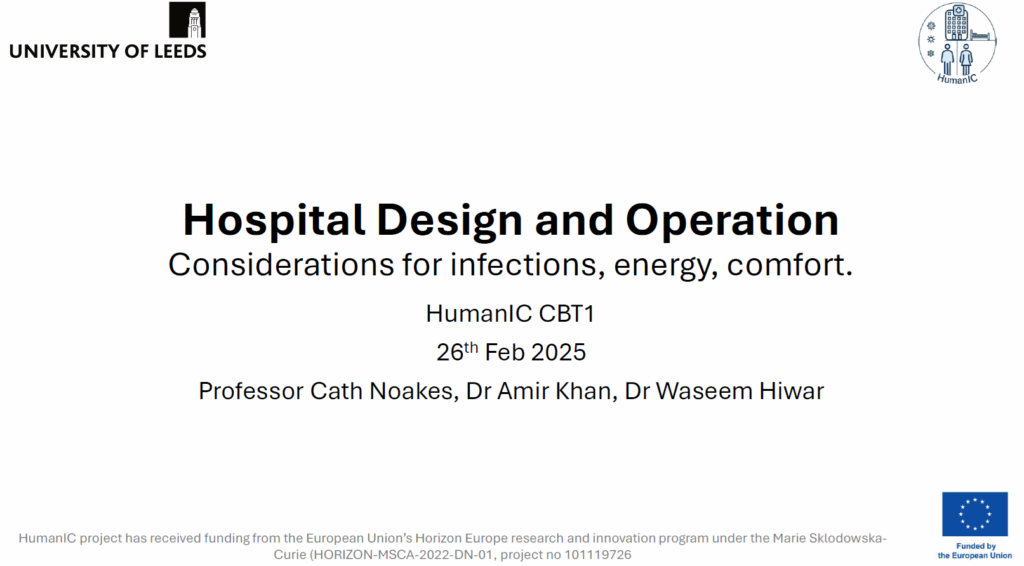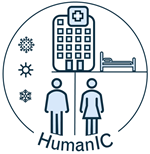Led by Prof. Cath Noakes, Dr. Amir Khan, and Dr. Waseem Hiwar, this presentation explores how hospital design and operational strategies affect health outcomes, energy performance, and user comfort — with a focus on infection control.
Main Objectives: Understand the environmental impact on patient care, comfort, infection risk, and sustainability. Explore design challenges in various hospital zones, including isolation rooms, naturally ventilated wards, and air cleaning technologies. Learn how to collect meaningful data in real hospital environments for research.
Key Topics Covered:
- Ventilation & Comfort: Adequate airflow and air change rates are critical to reducing infection risk and ensuring thermal comfort. Hospital ventilation systems vary (natural, mechanical, hybrid) and must balance energy use, infection control, and usability.
- Airborne Infection Risks: Includes pathogens like TB, COVID-19, MRSA, norovirus, and others. Emphasis on dilution and removal of airborne contaminants using airflow strategies.
Design Scenarios:
- Negative and Positive Pressure Isolation Rooms Used for protecting or isolating patients. Must maintain reliable pressure differentials and fail-safe ventilation.
- Naturally Ventilated Wards: Cost-effective and common, but sensitive to environmental and behavioral factors. Mechanical supplementation can dramatically reduce infection risk.
- Portable Air Cleaning Technologies: HEPA filters, UV-C devices, and hybrid solutions can improve air quality, especially where retrofitting full ventilation is difficult.
Trade-offs in Design: Decisions must weigh energy use, infection control, comfort, noise, cost, safety, and infrastructure limits. Design choices vary by clinical function and must align with patient vulnerability and room use.
Measurement & Research Challenges: Real hospital environments are complex. Researchers must assess airflow, particle concentrations, and thermal conditions — often in constrained conditions.




